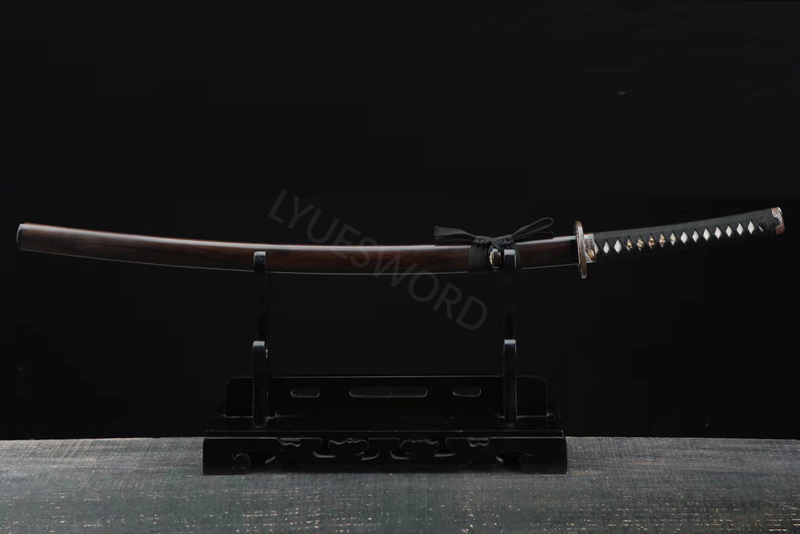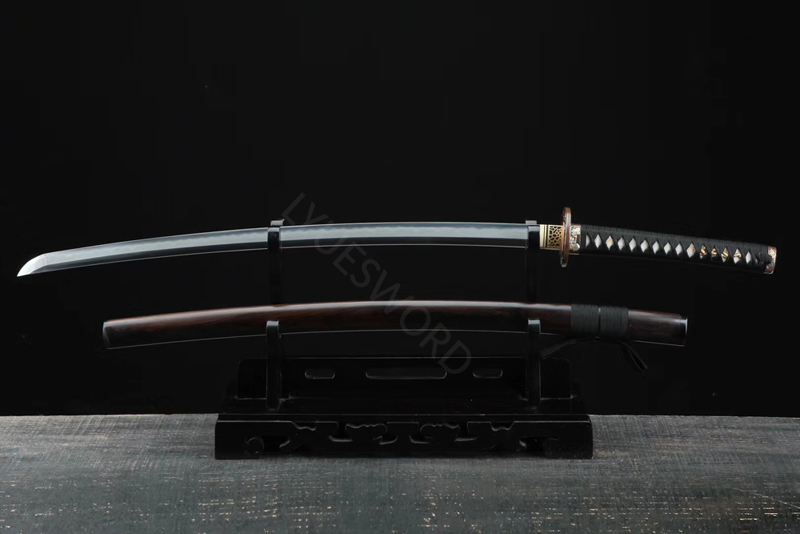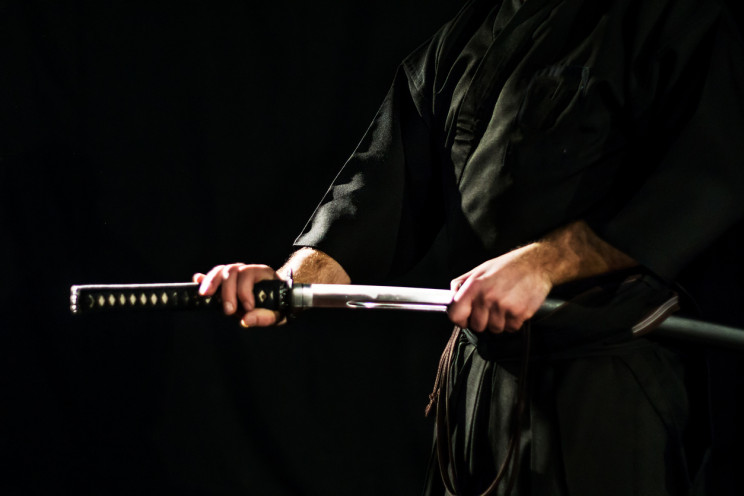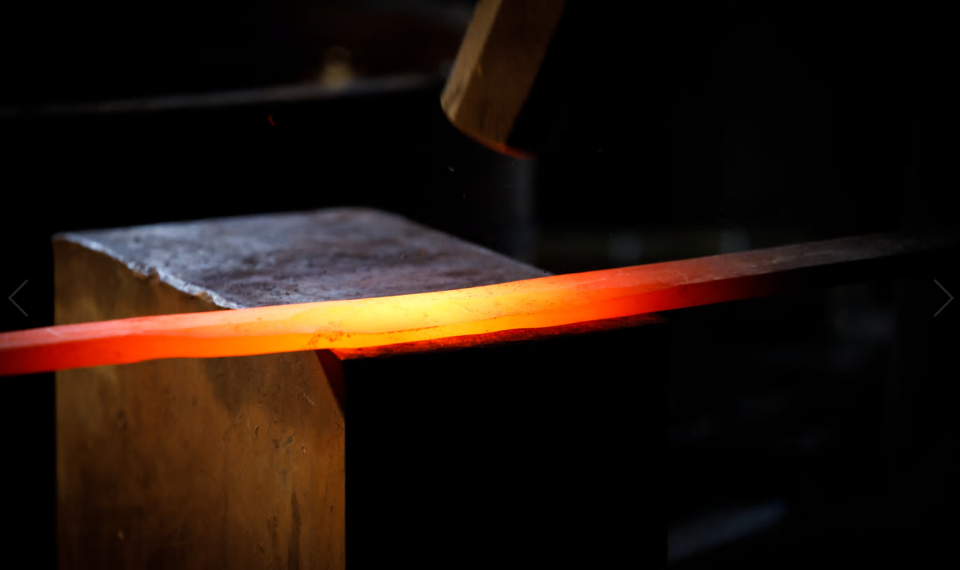By lyuesword | 19 August 2020 | 1 Comments
How Important Sori is to the Sword and in Fighting
How Important Sori is to the Sword and in Fighting?
Indeed, Sori is as important to the sword as its size, shape, and material composition.
First, it adds to the aesthetics of the sword. It makes the shape look more beautiful. A sword with a curve looks more slender than one without it.
Second, it is easier to draw from the sheath than with a straight blade. As such, it can cut more quickly and efficiently. It does it only in a single motion, in fact. Hence, it can kill multiple enemies.


https://lyuesword.com/products/shihozumi-clay-tempered-katana-hazuya-polish-sharp-folded-stee-blade-japanese-sword-dragon-fitting
In connection to this, it captures the sharpness of the sword. Thus, it enhances striking, plunging, and stabbing. The cutting edge must impact the target and inflict damage on it. As such, the sword should be in an angle across it for easier drawing. This angle provides the sword more cutting area than a straight one.
Meanwhile, a straight blade requires intensive training and focus for the user to wield correctly. Its weight does not balance from the top of a galloping horse, for instance. Also, it is likely to get stuck in the target. Hence, there is a possibility of losing it. This is not a problem with a curved sword.

How do Swordsmiths Fashion It?
Smithing the sword with curvature is more benificial for cutting than thrusting. However, swordsmiths do not intend it to be. They only want to make swords that can cut better. In fact, cutting is the best asset of a sword.
Historically, Rome and other civilizations used bronze. Instead of forging, they made it in a cast mold. Thanks to the advent of steel metallurgy! It opened the doors to new possibilities of sword making and weaponry.
From then on, swordsmiths began using a special type of steel, the Tamahagane. It allowed for forging without breaking and damaging the blade whereas bronze swords were likely to experience this.
People say that the sword gets its distinctive curve through forging. Actually, it obtains it by quenching. In this process, the smith smelts multiple layers of steel sheets. He does it with varying levels of carbon.

He evenly distributes it throughout the blade to eliminate the impurities. When creating the layers, he stretches and folds them. It creates a steel block which he then forms into a billet.
Afterwhich, he places the blade in the forge. He heats the carbon and fuses it with the steel. Then, he quenches the blade in water to cool it. Sometimes, he soaks it in oil. This exposure to such liquids causes the steel to form martensite. This is a body-centered tetragonal form of iron that contains dissolved carbon.
Now, what determines the curve is the rate by which the blade heats and cools. For instance, Katana has its cutting edge thinner than the rest of the body. Thus, that part heats and cools at a different rate.
Want a unique sword? Feel free to contact us:
Email: lyuesword@hotmail.com
Website: www.lyuesword.com
Custom Sword Page: www.lyuesword.com/Custom-Sword/customization-options/Create-Your-Own-Swords
Indeed, Sori is as important to the sword as its size, shape, and material composition.
First, it adds to the aesthetics of the sword. It makes the shape look more beautiful. A sword with a curve looks more slender than one without it.
Second, it is easier to draw from the sheath than with a straight blade. As such, it can cut more quickly and efficiently. It does it only in a single motion, in fact. Hence, it can kill multiple enemies.


https://lyuesword.com/products/shihozumi-clay-tempered-katana-hazuya-polish-sharp-folded-stee-blade-japanese-sword-dragon-fitting
In connection to this, it captures the sharpness of the sword. Thus, it enhances striking, plunging, and stabbing. The cutting edge must impact the target and inflict damage on it. As such, the sword should be in an angle across it for easier drawing. This angle provides the sword more cutting area than a straight one.
Meanwhile, a straight blade requires intensive training and focus for the user to wield correctly. Its weight does not balance from the top of a galloping horse, for instance. Also, it is likely to get stuck in the target. Hence, there is a possibility of losing it. This is not a problem with a curved sword.

How do Swordsmiths Fashion It?
Smithing the sword with curvature is more benificial for cutting than thrusting. However, swordsmiths do not intend it to be. They only want to make swords that can cut better. In fact, cutting is the best asset of a sword.
Historically, Rome and other civilizations used bronze. Instead of forging, they made it in a cast mold. Thanks to the advent of steel metallurgy! It opened the doors to new possibilities of sword making and weaponry.
From then on, swordsmiths began using a special type of steel, the Tamahagane. It allowed for forging without breaking and damaging the blade whereas bronze swords were likely to experience this.
People say that the sword gets its distinctive curve through forging. Actually, it obtains it by quenching. In this process, the smith smelts multiple layers of steel sheets. He does it with varying levels of carbon.

He evenly distributes it throughout the blade to eliminate the impurities. When creating the layers, he stretches and folds them. It creates a steel block which he then forms into a billet.
Afterwhich, he places the blade in the forge. He heats the carbon and fuses it with the steel. Then, he quenches the blade in water to cool it. Sometimes, he soaks it in oil. This exposure to such liquids causes the steel to form martensite. This is a body-centered tetragonal form of iron that contains dissolved carbon.
Now, what determines the curve is the rate by which the blade heats and cools. For instance, Katana has its cutting edge thinner than the rest of the body. Thus, that part heats and cools at a different rate.
Want a unique sword? Feel free to contact us:
Email: lyuesword@hotmail.com
Website: www.lyuesword.com
Custom Sword Page: www.lyuesword.com/Custom-Sword/customization-options/Create-Your-Own-Swords
Recently Reviews
Read MoreLeave a Reply
Your email address will not be published.Required fields are marked. *